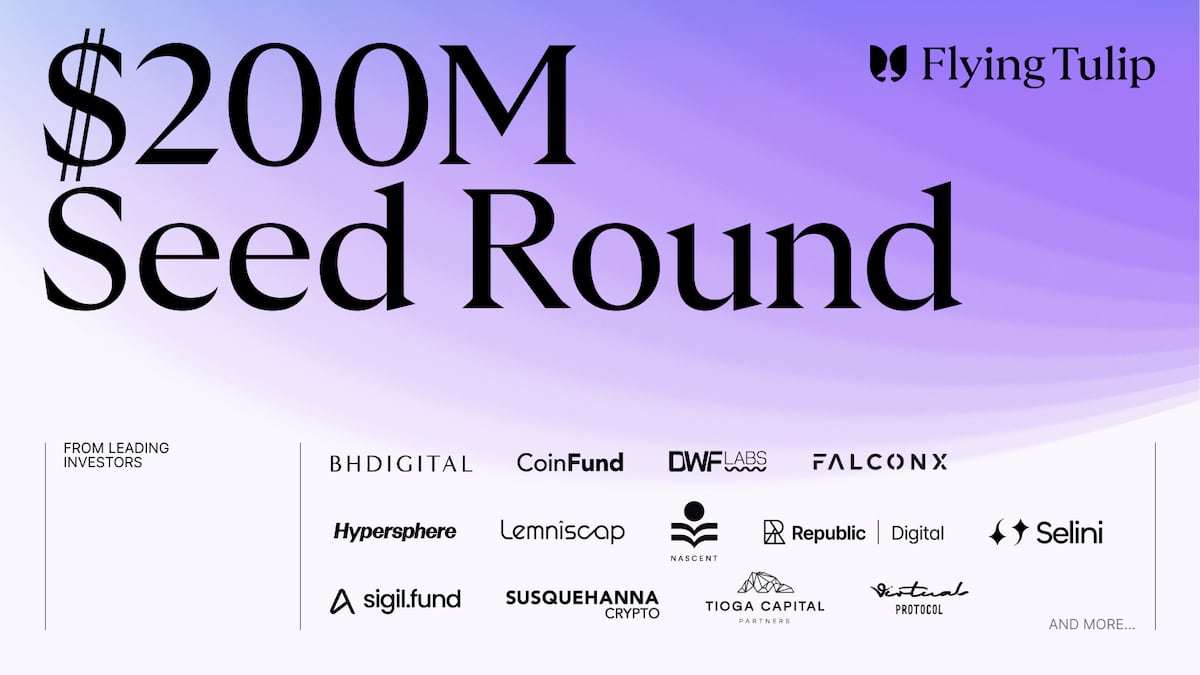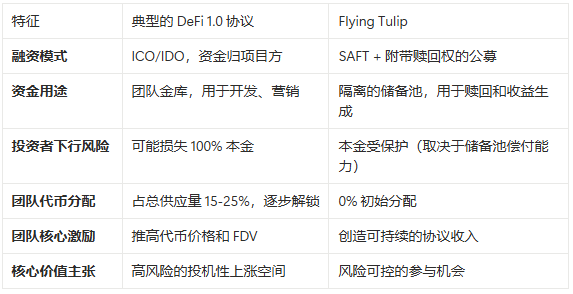Written by: Luke, Mars Finance

When the "DeFi Father" Andre Cronje (AC) returned with a new project called Flying Tulip and a luxurious $200 million funding list, the market's attention was not initially focused on the grand narrative of his "full-stack on-chain exchange." Instead, everyone was captivated by an unheard-of mechanism in its token public offering: participants can destroy tokens at any time to reclaim their principal.
This is almost heretical in the crypto world. A builder known for "testing in production" has now launched a design that can be described as "the strongest regret medicine in DeFi history." What exactly happened behind this? Before delving into the project, we must first understand who this figure, who triggered an industry earthquake, really is.
Who is AC - The Father and Devil of DeFi

In the world of DeFi, the name Andre Cronje (AC) is both a totem and a curse. To understand why he can stir up billions of dollars in capital with a new project, you must know his three faces:
The First Face: "The Godfather" and "King of Fair Launch." During the "DeFi Summer" of 2020, he single-handedly wrote the code for Yearn Finance (YFI) and pioneered the "Fair Launch" model—no pre-mining, no VC shares, no team allocations, all tokens distributed to the community. This move instantly made him a legend, and YFI became one of the most iconic "blue-chip" assets in the DeFi space. He earned the title of "DeFi Father," representing the purest builder spirit of that era.
The Second Face: "Testing Maniac" and "Eminence Nightmare." AC is famous for saying "I test in prod," which reflects both his confidence in his code and a risk warning to users. However, the extreme manifestation of this style was the Eminence (EMN) incident. At that time, enthusiastic community users poured $15 million into an unreleased, unaudited test contract, which was then exploited by hackers using a flash loan attack. Although AC did not intend for this to happen, the incident made him a target of criticism and left an indelible "scar" in his heart.
The Third Face: "Burnout" and "Market Whale." His immense reputation brought endless pressure, community attacks, and regulatory scrutiny. In 2022, physically and mentally exhausted, AC announced he would "exit the crypto space" with his colleagues, which directly triggered a crash in the prices of all tokens related to him, evaporating billions from the market. His presence or absence could sway the market's short-term direction, and this immense influence is itself filled with contradictions and controversies.
In summary, Andre Cronje is a paradoxical figure embodying genius, idealism, chaos, and immense destructive power. He can create value or ignite risk. Therefore, when such a figure chooses to return with a "risk-averse" new paradigm like Flying Tulip, the entire industry holds its breath. Because everyone understands that this must hide his profound reflections on all past glories and pains.
The Paradox of Core Mechanisms: "Perpetual Put Options" and Trust in "Outsourcing"
The most revolutionary design of Flying Tulip is undoubtedly its mechanism known as "on-chain redemption rights." The industry prefers to call it "perpetual put options"—the principal you invest (e.g., ETH) will always be the price floor of your $FT tokens. You can exercise this right at any time, destroying the tokens to reclaim your ETH.
This design precisely hits the core pain point of DeFi users: the deep fear of project teams running away (Rug Pull) and tokens going to zero indefinitely. It psychologically disarms investors, packaging a high-risk investment behavior as a "conditional, revocable" participation.
However, a fatal question arises: if the $1 billion raised is locked in the pool as "redemption reserves," where will the project's development, operation, and incentive funds come from?
AC's answer is to let this money "make money" for itself. This massive fund will be deployed into mainstream DeFi protocols like Aave, Spark, and especially Ethena, aiming to generate about 4% (approximately $40 million) in stable annual returns. This revenue is the true fuel driving the entire Flying Tulip ecosystem, used for token buybacks and incentive payments. AC calls this a "self-reinforcing growth flywheel."
But the devil is in the details. This seemingly perfect closed loop creates a new, cleverly hidden risk exposure. The solvency of the "perpetual put options" entirely depends on the robustness of third-party protocols like Ethena. This is akin to outsourcing the security door of a five-star hotel to a security company with inconsistent performance.
Ethena's USDe is not a risk-free asset; its returns are rooted in complex basis trading and counterparty risks from centralized exchanges. If the market enters a prolonged bear market and funding rates remain negative, Ethena's revenue engine could stall or even incur losses. At that point, Flying Tulip's "growth flywheel" could instantly reverse into a "death spiral": protocol income dries up, token buybacks stop, market confidence collapses, and ultimately trigger a run on the redemption pool.
Therefore, the project team repeatedly emphasizes in the documentation that "this is not a guarantee." The efficacy of this "regret medicine" entirely depends on external conditions and will initiate queues and restrictions under extreme pressure. It resembles a structured retreat channel rather than an infinite emergency exit.
The Ultimate Rebellion Against "VC Dump Culture"
If the redemption mechanism is a response to investors' fears, then the team incentive model of Flying Tulip is a complete subversion of the "insider culture" that DeFi has long been criticized for.
The project team has no initial token allocation.
This seems so out of place in an era where teams and investors often reserve over 20% of the shares. The traditional model turns the core incentive for teams into how to pump the price after the unlock period, with the community and retail investors becoming their exit liquidity.
Flying Tulip stipulates that the entire compensation for the team must be used to buy back $FT tokens from the open market using the real income earned by the protocol, which is then distributed according to plan. This "create value for shareholders first, then obtain returns from the market" model binds the interests of the team, users, and token holders together in an unprecedented way.
This design is a testament to AC's shift from the idealism of "mining for love" during the YFI era to the realism shaped by experience. It fundamentally eliminates concerns about "team dumping" and forces the team to focus on creating sustainable income rather than inflating FDV. This is a profound incentive revolution aimed at redirecting builders' focus from financial games back to the product itself.
It is precisely for this reason that we see names like Brevan Howard Digital on the investor list. The digital asset division of this top macro hedge fund is known for its stringent risk control, and their involvement is a powerful endorsement of this "risk reduction and trust enhancement" model. This marks the beginning of DeFi telling its story in a language that institutions can understand (risk isolation, clear cash flow, aligned interests).
The Ambition of an Integrated Behemoth: Challenging the Lego Tradition of DeFi
On a grand product level, Flying Tulip aims to become a "top broker version of DeFi," integrating all functions such as stablecoins, lending, spot trading, derivatives, and options under a unified cross-margin account.
This is a reflection on the "currency Lego" spirit of DeFi. While composability has brought permissionless innovation, it has also led to ecological fragmentation and the spread of systemic risks. AC's judgment is that a deeply integrated platform can provide higher capital efficiency and a smoother user experience.
However, this is also a perilous path. It means that Flying Tulip must simultaneously challenge seasoned "local giants" like Uniswap, Aave, and Hyperliquid across all tracks. While integration can bring efficiency advantages, it also carries the significant execution risk of being "jack of all trades, master of none." Its success will depend on whether its "one-stop" convenience is enough to persuade users to abandon the best products in their respective fields that they have already grown accustomed to and trust.
Table: Collision of Design Philosophies Between New and Old DeFi

Conclusion: Is it an Evergreen Tree or the Most Beautiful Tulip?
Flying Tulip is a "memoir" of Andre Cronje, filled with struggles, reflections, and ambitions.
It responds to the blind spots of users and its own powerlessness in the Eminence incident with "one-click refunds"; it addresses the immense pressure and burden of fame from the YFI era with "zero team allocation"; and it embraces top institutions in response to the SEC's two-year crackdown.
However, this intricate system is not flawless. Its integrated ambition faces significant market competition, while its safety foundation is precariously built on trust in other protocols. This makes it appear as a massive, intricately linked precision instrument, where the failure of any single gear could lead to the entire system's collapse.
Ultimately, the name Flying Tulip itself is a brilliant metaphor. It attempts to endow the most famous speculative bubble in financial history—the tulip—with the life force to truly "fly" through unprecedented mechanism design, transcending bull and bear markets.
The outcome of this experiment will not only determine the final chapter of Andre Cronje's legend but will also question the entire DeFi industry: after experiencing the fervor of barbaric growth, do we need the next casino that can create a hundredfold myth, or a harbor that allows us to sleep peacefully through the storm?
免责声明:本文章仅代表作者个人观点,不代表本平台的立场和观点。本文章仅供信息分享,不构成对任何人的任何投资建议。用户与作者之间的任何争议,与本平台无关。如网页中刊载的文章或图片涉及侵权,请提供相关的权利证明和身份证明发送邮件到support@aicoin.com,本平台相关工作人员将会进行核查。




